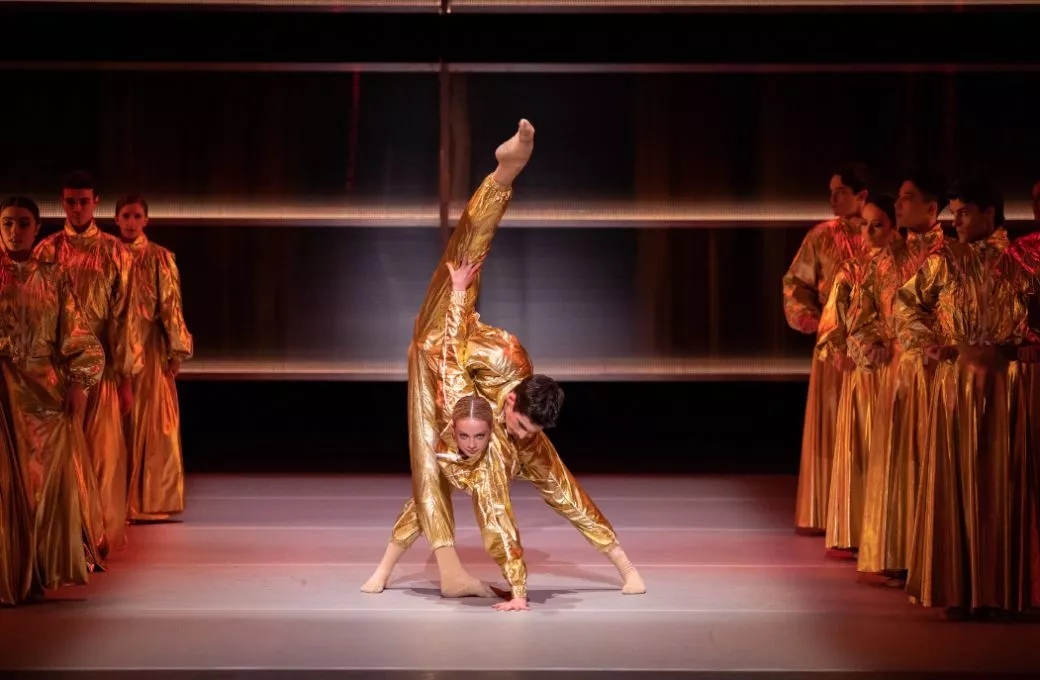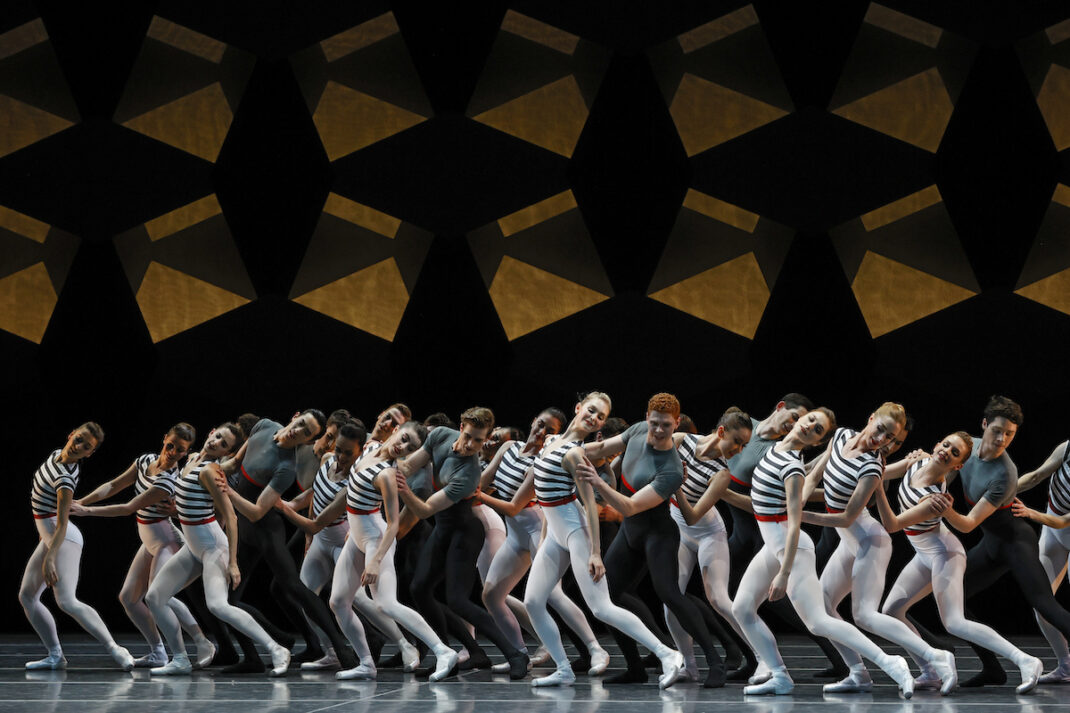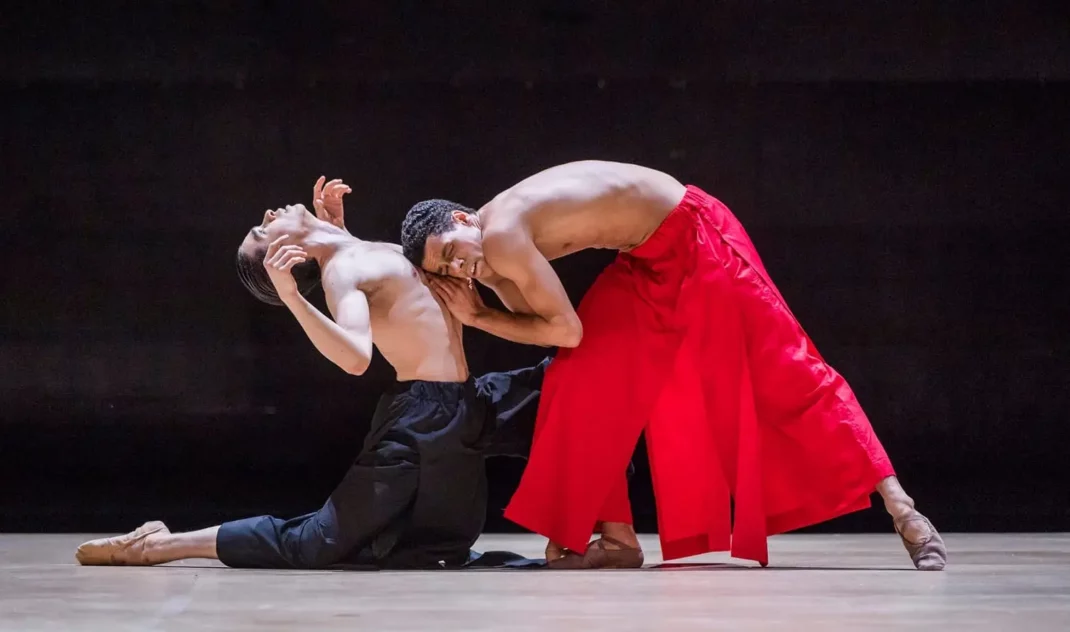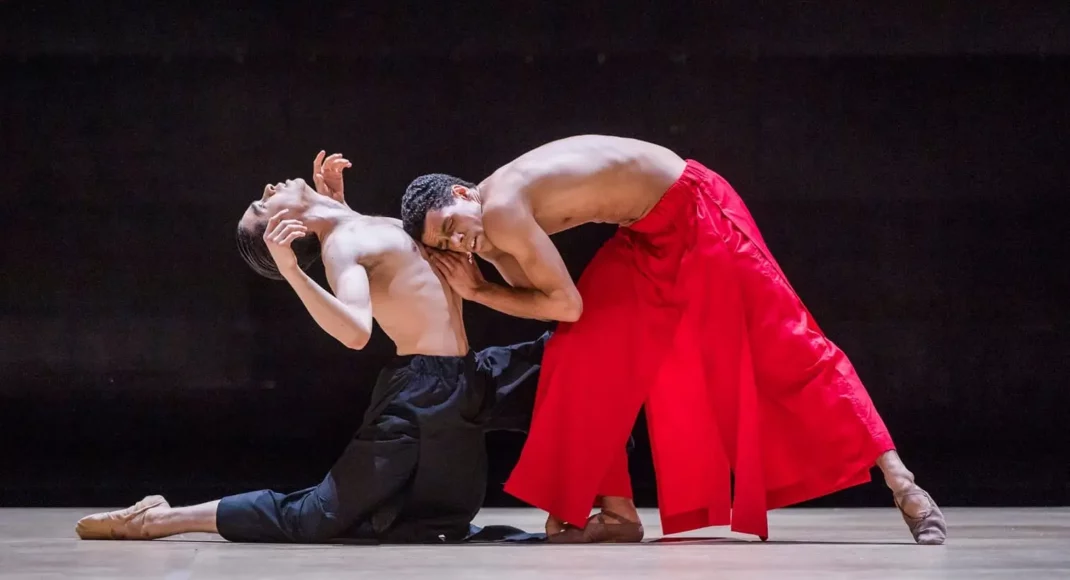26 November 2022 (matinee). Joan Sutherland Theatre, Sydney Opera House
After watching Kunstkamer earlier this year, I felt such positivity about the future direction of the Australian Ballet under the direction of David Hallberg. I wrote, ‘Kunstkamer is a complete change for the Australian Ballet. It is a magnificent, brilliantly conceived, exceptionally performed work giving audiences (and perhaps even the dancers) a whole new look at what dance can achieve, and maybe even what we can expect for the next several years under Hallberg?’ After Instruments of dance I am not so sure about those expectations. I found Instruments of dance, which consisted of three works by choreographers working across the world today, decidedly underwhelming, and as my companion succinctly put it, ’Things can only get better.’
The program opened with Wayne McGregor’s Obsidian tear, which I first saw in London in 2018. Then I found it a cold work. This time it certainly wasn’t cold, in fact it was the opposite. After the opening emotion-filled duet, it showed anger, aggression and even a sense of hatred and ill feeling between the nine members of the all-male cast. It was a comment by McGregor, to my mind anyway, on aspects of sexuality. But what bothered me on this occasion was the choreography, which was often full of McGregor’s body-bending movement, but at other times seemed really static with dancers simply standing with arms in geometric shapes. Somehow it didn’t come together as a unified whole and I remain convinced that Obsidian tear is not one of McGregor’s outstanding works, despite some extraordinary and heart-wrenching moments.
The middle work on the program, Annealing, came from Alice Topp, whose brilliant Aurum remains fixed in my mind four years after I saw it first. Annealing means, we are told, ‘ the process of heating metal or glass to a temperature below its melting point in order to make it softer’. It began with a startling duet, which was followed by an equally startling group section. The duet was dressed simply and elegantly but the costumes for the group section that followed were extravagantly designed, to put it mildly, with all dancers wearing gold clothing that concealed most of the working body. This of course limited the kind of movement that could be executed and in this group section Topp often focused on unison movements of the arms and hands, and bends of the upper body. This looked fine when unison was strongly executed but it was really a dance for costumes more than anything.

Justin Peck’s Everywhere we go closed the program. It had, perhaps not surprisingly, a strong American look given that Peck is currently artistic director of New York City Ballet and was a dancer with the company for many years. It had a distinct show bizz feel, which I would enjoy (perhaps) if I went to see a musical but it was frustrating to say the least when in the repertoire of a ballet company. It was repetitious and in fact the audience clapped and cheered at one point thinking that the work had come to an end. But it hadn’t and it continued in its repetitious manner for several more minutes. In addition to many fast turning steps (a little a la Balanchine), Peck used lines of dancers whose numbers grew and diminished constantly and also often used what to my mind were quite ugly poses in which the dancers lent forward with curved backs that somehow mirrored the statically held, curved arms that accompanied the leaning. Then there was all that grinning out to the audience. No thanks.

As a subscriber (I am not regarded as a legitimate reviewer apparently and so do not enjoy any reviewer privileges), I paid $236 to see this show. It is a big price to pay for a program that delivered little that I could admire and enjoy. I am hoping I will see something better next year.
Michelle Potter, 28 November 2022
Featured image: Scene from Obsidian tear, 2022. Photo: © Jeff Busby


😳 golly Michelle that’s almost more than I pay for five Melbourne nights! I’m very very budget-conscious at the moment so am sitting in a central seat up in the balcony. View of crowd scenes is excellent and I’ve my binoculars (and occasionally my Mum and her credit card – after all, an elderly mobility-challenged person needs a companion) for everything else.
I hated the noise masquerading as music for the McGregor. I’m also told it was impossible to count.
I find it hard to be objective about Alice Topp’s work because I loved Aurum so so much, but Annealing isn’t on that level. The two pas de deux stand out the more because the sandwich filling is so different.
The Peck was better than Harlequinade in my opinion, if only because it was shorter. In the cast I saw, Joseph Caley and Brett Chynoweth absolutely dazzled.
Such a treat to follow it up with Cranko’s Romeo and Juliet…
Hi Anna, your comment re Alice Topp’s work is interesting. I felt the same to tell the truth as Aurum was just amazing, so it was hard to be objective about the new work. Re seating, I really like sitting up in the gallery occasionally. You are right that from there you get a terrific view of crowd scenes and the view of group sections of the choreography is really good. I remember seeing a performance of Giselle from the gallery and getting a totally different view of some scenes.
My comments on the Cranko R & J are to come.